Hybrid Art Project Creates Symbiosis Between Plants and Computers
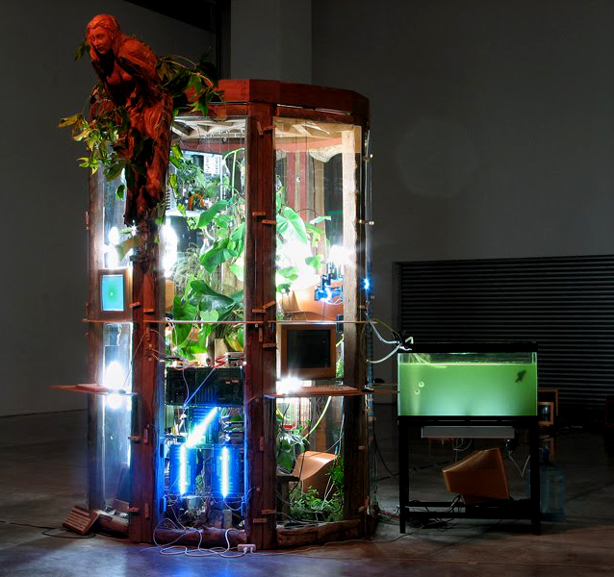 Throughout much of history, art and science have co-existed in a symbiotic and synergistic relationship. Inquiry, experimentation, and observation lead to creative works in both the studio and the laboratory. A modern-day example of this melding of the two is Biomodd, a multifaceted socially engaged art installation which lives at the intersection of art, biology, and technology.
Throughout much of history, art and science have co-existed in a symbiotic and synergistic relationship. Inquiry, experimentation, and observation lead to creative works in both the studio and the laboratory. A modern-day example of this melding of the two is Biomodd, a multifaceted socially engaged art installation which lives at the intersection of art, biology, and technology.
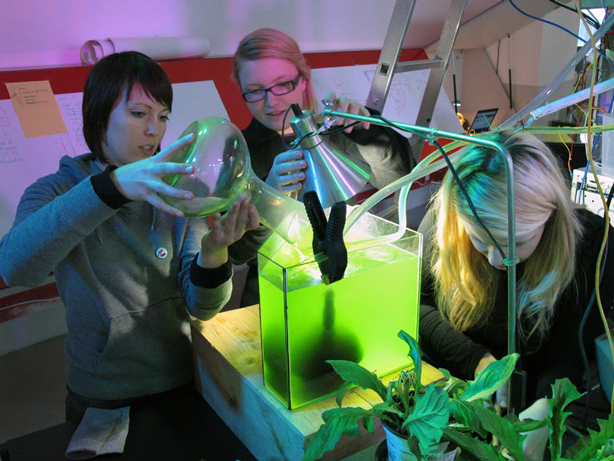
A nomadic open source project conceived by Belgian
biologist-turned-artist and Senior TED Fellow, Angelo Vermeulen, Biomodd
explores meaningful
relationships between biology, computers and people. “On the most basic level,” explains Vermeulen, “Biomodd creates
symbiotic relationships between plants and computers, and
ignites conversations among the community around them.”
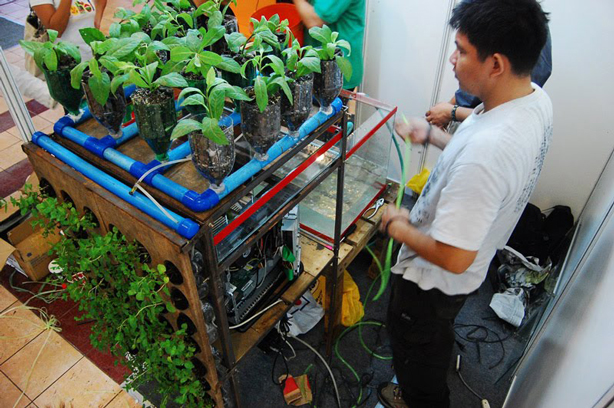 Algae, Computers, and Plant-Based Ecosystem
Algae, Computers, and Plant-Based Ecosystem
Bridging science and art, Vermeulen and fellow collaborators use algae
to cool computer processors, allowing the machines to run faster,
utilizing the heat generated by the computer’s electronics to create
ideal growing conditions for a plant-based ecosystem.
This dynamic is the catalyst for co-creation efforts throughout the
world between a core team composed of artists, biologists, computer
scientists, game designers, gardeners, community organizers, and members
of the local community in which the project is experienced.
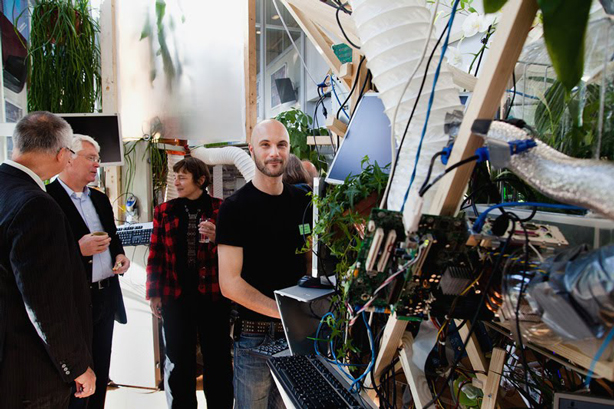 Multi-Faceted Collaborative and Co-creative Effort
Multi-Faceted Collaborative and Co-creative Effort
Collaboration and co-creation, integral to the Biomodd project,
functions on two levels. Teams work together yet every individual
within the group is empowered to add something substantial to the work.
The project begins with a solely conceptual focus, then grows
organically from there then gets recreated in different
locations throughout the world, each time with different people.
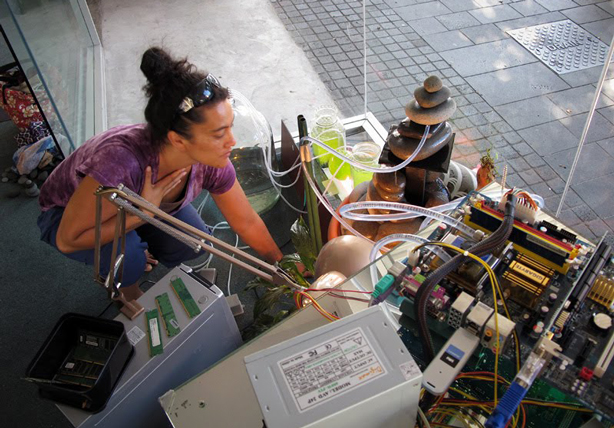 Operating Beyond Boundaries of Contemporary Art
Operating Beyond Boundaries of Contemporary Art
Biomodd’s primary inspiration and impetus,
Case Modding–a
practice where people modify their PCs into functional works of art–is,
according to the artists, “an active and creative subculture which
operates way beyond the boundaries of contemporary art.”
Biomodd explores this user-led modification concept from an artistic
perspective, transforming electronic-based computer systems into
plant-based ecosystems. Approaching the work as a form of “expanded
sculpture,” they build structures which are both functioning computer
and living sculptures, co-opting the computer’s functionality
by recycling the heat it emits to create an ecosystem inside
an electronic structure.
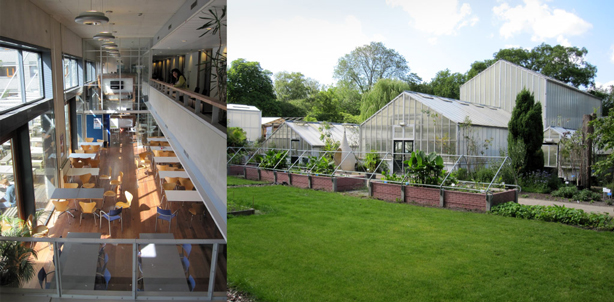 Left. in Netherlands, TU Delft’s Faculty of Technology
Policy and Management where Biomodd will be developed. Right: Botanical
garden. Photo via Biomodd.
Gaming the Ecosystem
Left. in Netherlands, TU Delft’s Faculty of Technology
Policy and Management where Biomodd will be developed. Right: Botanical
garden. Photo via Biomodd.
Gaming the Ecosystem
The gaming culture and digital games are integral to each Biomodd
installation. Each exemplifies the social nature of gaming and game
culture, functioning as a fully enabled gaming station for multi-player
games.
From the Artist Statement:
“Biomodd was conceived to challenge presumed notions of opposition
between nature and technology in different cultures throughout the
world. In Biomodd, nature and technology are not juxtaposed but rather
fused into imaginative hybrid installations. The core idea is the
creation of experimental systems in which modified computer networks
coexist with living ecosystems. The challenge is to bring biological
life as physically close to the electronics as possible, and allow them
to communicate with each other through meaningful symbiotic
relationships.”
The Biomodd Conceptual Framework
Each project is predicated on a set of themes:
1. Symbiosis between biological and electronic systems.
2. E-waste and its creative reuse.
3. Case modding.
4. Digital games and gaming culture.
5. Juxtaposition of local and global.
6. Open sourcing.
The Biomodd Circuit
Biomodd debuted in Athens, Ohio in 2007, and various version of
it have since traveled to the Philippines, Slovenia, New Zealand,
Belgium, the Netherlands, New York, Germany, Kosovo, and now London.
Biomodd [ATH
1] in Athens, Ohio was built between September
2007 and January 2008, and was nominated for the Prix Ars Electronica
Hybrid Art award in 2008. The more monumental second iteration, Biomodd
[LBA2], was created in Los Baños, Philippines between February and
October 2009 and was co-led by Angelo Vermeulen and Diego Maranan. In
2010, after completion of Biomodd [LBA
2], Angelo was granted a TED Fellowship in part because of his work on the Biomodd series.
In 2011 during Biomodd [TUDelft
3] in the Netherlands
augmented reality was implemented for the first time by Pieter Steyaert.
Introductory Biomodd workshops have been conducted in Sint-Niklaas
(Belgium), Maribor (Slovenia), and New Plymouth (New Zealand).
Independent Biomodd projects have been built in the Philippines and
Slovenia – led by Al Librero, Maruša Novak and others. Currently a new
full-scale Biomodd version is under development at NYSCI in New York
City, and in 2014 Biomodd will set foot in London.
All photos via Biomodd.






